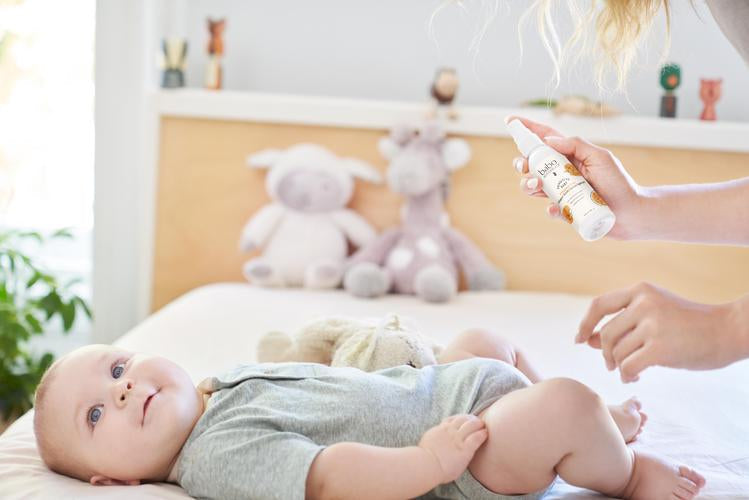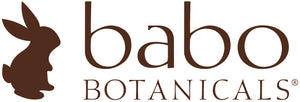
What Causes Diaper Rash? And How to Deal With it.
What Causes Diaper Rash:
- Friction: Most diaper rash is caused by friction that develops when sensitive baby skin is rubbed by wet diapers. This results in a red, shiny rash on exposed areas.
- Irritation: The skin under the diaper gets red from irritants such as feces, urine, or cleaning agents. Irritation can be caused by the diaper or by the acid in urine and bowel movements. This rash appears red in the area where the diaper has rubbed and is normally not seen in the folds of the skin.
- Candidal infection: The rash of a candidal infection, also known as fungal or yeast infection, usually has a bright, beefy red appearance and is very common after the use of antibiotics. Candida is a fungal microorganism that is typically found in warm, moist places.
- Allergic reaction: The rash may be a reaction to diaper wipes, diapers, laundry detergent, soap, lotion, or the elastic in plastic pants. Even reactions to solid foods or an episode of diarrhea or other medication can cause a diaper rash
- Heat: This is part of friction.
Types of Diaper Rash

Diaper Rash Symptoms
Identifying a diaper rash is usually fairly easy. The rash is located on skin underneath the diaper area.
The skin is red and irritated. It may appear all over your baby's bottom or genital area, or only in certain places. It may or may not involve the folds of the skin.
Baby Diaper Rash
Every mother knows how important diaper rash cream is for preventing dry and chapped skin from developing on her baby's bottom. But surprisingly, many baby diaper creams sold in stores contain alcohol as one of their primary ingredients, and this can actually promote diaper rash.
Almost every baby will get diaper rash at least once during the first 3 years of life, with the majority of these babies 9-12 months old. This is the time when the baby is still sitting most of the time and is also eating solid foods, which may change the acidity of the bowel movements. Diaper rashes are generally harmless but become very painful and can lead to harmful sores if not addressed.

Adult Diaper Rash
An adult may develop a rash in the genital area if he or she cannot wash the genital area well. If an adult does not have complete bowel or bladder control (incontinence), he or she may use incontinence briefs. These briefs can cause skin irritation or a person may be allergic to the perfumes in the material. This type of rash is very similar to a baby's diaper rash. Home treatment measures may help the rash go away.
Fungal or bacterial infections may be the cause of the diaper rash. The skin may be red and swollen with a mild rash or blister and peel in a severe rash. A diaper rash that becomes raw, oozes fluid, or bleeds is harder to treat.
Symptoms Severe Diaper Rash
If your baby is suffering from severe diaper rash, he/she will have raised bumps on the diaper area and it will be deep red in color. Due to inflammation, the baby may scream during urination or passing stools. Parents should be sure that is indeed severe diaper rash before treating it. Other signs of severe diaper rash are:
- Intense redness on large area of bottom
- Severe peeling & edema (swelling)
- Bleeding from peeled region
- Large, connected areas of raised papules
- Fluid containing bumps or pustules
Most diaper rashes last about 24 hours and can be treated at home. You should consult the doctor when any of the things happen:
- If the rash doesn’t get better with treatment or gets worse in 2-3 days.
- If the baby develops fever or looks sluggish.
- If such signs and symptoms of yeast infection as white scales and lesions appear with red rash and swelling, occurrence of small red “satellite” pimples or redness in the folds of baby skin.
Diaper Rash Treatment
Diaper Rash Remedies
The best diaper rash treatment is to keep the skin clean and dry. This also helps prevent new diaper rashes. Lay your baby on a towel without a diaper whenever possible. The more time the baby can be kept out of a diaper, the better.
- Put a natural layer of zinc-oxide based protective cream which is the most effective barrier
- Avoid using products with mineral or petrolatum
- Change your baby's diaper very often and as soon as possible after he or she urinates or has a bowel movement.
- Clean the area as often as you can with a sulfate free product
- Leave skin to air diaper-free as often as possible.
- Talk to your doctor if your baby's diaper rash begins oozing or does not get better after 3 days.

Diaper Rash Prevention
Incorporating a few simple steps can reduce the chances of occurrence of diaper rash on the baby’s skin:
- Change the diaper often. Diapers should be changed as soon as they get wet or soiled. Checking the diaper every couple of hours and this should be done more frequently for new born babies.
- Keep baby’s skin clean and dry. Clean the skin with warm water and soft cloth. Soap is not required unless skin is very dirty. Use only mild soap and pat the skin dry. Wipes should be free of alcohol and propylene glycol. Change the diapers when soiled, and let the baby be naked for short durations. Avoid using talcum powder, as they can irritate the lungs.
- Avoid irritation. Baby wipes, detergents and diapers can cause irritation due to the presence of alcohol, perfumes and bleach in them. Use cloth diapers and cotton balls to wipe. Try changing detergents and do not use fabric softeners. Rinse the diapers twice and adding vinegar in the rinse might help.
- Use barrier ointments. Ointments or cream containing zinc oxide protect the skin against diaper rash. It causes less irritation than lotion or liquid. Ensure that it allows the air to reach the skin and skin is dry before applying.
- Try without diaper when possible. Let the skin dry naturally and gently by allowing your baby to go without diaper for some time in intervals. You can place the baby on a large towel and play with him to prevent any messy accidents.
- Don’t wear the diaper too tight. Tight diapers do not allow air to enter the diaper area and create a moist environment which causes rashes. Such diapers also chafe the skin at the waist and thighs.
- Wash your hands after diaper-change. Ensure that you wash hands after changing diapers so that the risk of infection, especially due to bacteria and yeast, to other body parts, to you or other children can be avoided.
Our Plant-Based solutions
At Babo Botanicals, our Sensitive Baby Fragrance Free Diaper Rash Cream Spray is a no-mess, touch-free and ultra-gentle, zinc oxide formula that helps prevent diaper rash. This soothing lotion spray is plant based and forms a protective layer on baby’s bottom to help seal out moisture. Formulated with Organic Shea Butter, Olive Oil, and our Organic Nutri-Soothe™ Herbal Blend to nourish the most delicate skin.





